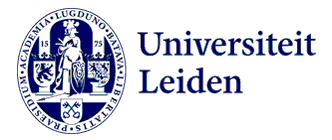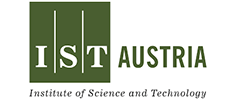Strengths and Limitations of The Indonesian Constitutional Court’s “6 Basic Principles” in Resolving Water Conflicts
DOI:
https://doi.org/10.31078/consrev916Keywords:
Allocation, Conflict, Governance, Indonesia, WaterAbstract
Many parts of Indonesia are already experiencing water stress and the condition is expected to become worse by 2045, when, according to the World Bank, 67% of Indonesia’s GDP will be produced in areas with high water stress. Conflict over water resources has been reported between water users and uses, such as between agriculture and drinking water, between agricultureand fisheries, and between farmers and industries. In 2015, responding to the petition to curtail private sector control over water resources, the Constitutional Court invalidated Water Law 7/2004 and introduced the 6 basic principles, that have been used as normative guidance for implementing the regulation on water resources and for resolving future water conflicts. However, the principles are ambiguous in many ways. This paper will critically examine the principles and then outline the difficulties in its implementation. The methodology employed is normative-analytical; incorporating analytical frameworks from water law and governance into constitutional adjudication. First the paper clarifies some conceptual frameworks related to water conflict and how the principles have been interpreted by regulators. The paper then explains the general categories of water conflict and where those principles would, or would not, fit. The paper then continues with a critique of the principles, in terms of their (i) unclearscope, (ii) conflation between users and uses, (iii) neglect of footprint and (iv) the implications for water reallocation. This paper finds that one of the strengths of the principles is that they provides a basic normative guidance for solving conflict in water allocation, the protection of human rights and the environment. However, these benefits come with some limitations: neglect of efficiency over perceived equity and potential restriction of reallocation of water among different users. The principles are also difficult to implement where there is conflict over water quality or spatial development. As such, the paper recommends that the Constitutional Courts revise and expand the principles in future cases using teleological approach and that in terms of implementation, the 6 basic principles should also be interpreted teleologically.
References
Al’Afghani, Mohamad Mova. “Alienating the Private Sector: Implications of the Invalidation of the Water Law by the Indonesian Constitutional Court.” Journal of Water Law 26, no. 3 (2019): 103-114, https://papers.ssrn.com/sol3/ papers.cfm?abstract_id=3666679.
Al’Afghani, Mohamad Mova. Legal Frameworks for Transparency in Water Utilities Regulation: A Comparative Perspective. London: Routledge, 2016.
Allan, Tony. “Productive Efficiency and Allocative Efficiency: Why Better Water Management May Not Solve the Problem.” Agricultural Water Management 40, no. 1 (March 1999): 71–75, https://doi.org/10.1016/S0378-3774(98)00106-1.
Anderson, Robert T. “Indian Water Rights: Litigation and Settlements.” Tulsa Law Review 42, no. 1 (July 2006): 15, https://papers.ssrn.com/sol3/papers. cfm?abstract_id=1140324.
Armanto, Fandi. “Baru 15 Persen Delapan Titik Jaringan Irigasi Jauh dari Target [Only 15 Percent Eight Irrigation Network Points Far from the Target].” Radar Bromo, published August 9, 2021. https://radarbromo.jawapos.com/ pasuruan/09/08/2021/baru-15-persen-delapan-titik-jaringan-irigasi-jauh-dari- target/.
Bacamalang.com. “Ini Rekom Dewan Soal Pemanfaatan Air Sumber Pitu untuk Petani [This is the Council’s Recommendation egarding the Use of Pitu water for Farmers].” Bacamalang.com, published March 4, 2020. https://bacamalang. com/ini-rekom-dewan-soal-pemanfaatan-air-sumber-pitu-untuk-petani/.
Baiquni, M., and R. Rijanta. “Konflik Pengelolaan Lingkungan dan Sumberdaya dalam Era Otonomi dan Transisi Masyarakat [Conflicts over Environmental and Resource Management in the Era of Autonomy and Community Transition].” Bumi Lestari Journal of Environment 7, no. 1 (2007). https:// ojs.unud.ac.id/index.php/blje/article/view/2414.
Bakker, K. J. An Uncooperative Commodity: Privatizing Water in England and Wales. London: Oxford University Press, 2003.
Bakker, Karen J. Privatizing Water : Governance Failure and the World’s Urban Water Crisis. New York: Cornell University Press, 2010.
BBC News Indonesia. “Situasi Saparua Berangsur Normal [The Situation of Saparua is Gradually Normal],” published March 8, 2012. https://www.bbc. com/indonesia/berita_indonesia/2012/03/120308_bentrokmalukutengah.
Benda-Beckmann, Franz von. “Contestations over a Life-Giving Force Water Rights and Conflicts, with Special Reference to Indonesia.” In A World of Water Rain, Rivers and Seas in Southeast Asian Histories, edited by P. Boomgaard, 240. Leiden: KITLV Press, 2007.
Bulsink, F., A. Y. Hoekstra, and Martijn J. Booij. “The Water Footprint of Indonesian Provinces Related to the Consumption of Crop Products.” European Geosciences Union 14, no. 1 (2009): 119-128, https://doi.org/10.5194/ hess-14-119-2010.
Calabresi, Guido. “The Pointlessness of Pareto: Carrying Coase Further.” The Yale Law Journal 100, no. 5 (March 1991): 1211-1237, https://doi.org/10.2307/796691.
Certain Activities Carried Out by Nicaragua in the Border Area (Costa Rica v. Nicaragua).
Constitutional Court Decision No. 058-059-060-063/PUUII/2004 Concerning the Approval of Law Number 7 of 2004 Concerning Water Resources.
Constitutional Court Decision Number 85/PUU-XI/2013 Regarding Review of Law Number 7 of 2004 Concerning Water Resources.
Dal Bo, E. “Regulatory Capture: A Review.” Oxford Review of Economic Policy 22, no. 2 (2006): 203–225, https://doi.org/10.1093/oxrep/grj013.
Defra. Water Industry Act 1991 Section 13(1) Modification of the Conditions of Appointment of United Utilities Water Plc. London: The Stationery Office, 2005.
Directorate General of Water Resources, Ministry of Public Works and Public Housing of the Republic of Indonesia. “Enam Prinsip Dasar Pengelolaan Air Kembalikan Pengaturan Air Ke Negara [Six Basic Principles of Water Management Return Water Management to the State].” Accessed April 5, 2017. http://sda.pu.go.id/pages/posts/Enam-Prinsip-Dasar-Pengelolaan-Air- Kembalikan-Pengaturan-Air-Ke-Negara.
Dispute over the Status and Use of the Waters of the Silala (Chile v. Bolivia). Accessed June 19, 2022.
Dugard, J. “Can Human Rights Transcend the Commercialization of Water in South Africa? Soweto’s Legal Fight for an Equitable Water Policy.” Review of Radical Political Economics 42, no. 2 (June 2010): 175–94, https://doi. org/10.1177/0486613410368495.
Dworkin, Ronald. Law’s Empire. Cambridge: Harvard University Press, 1986.
El-Fadel, M., et.al. “The Nile River Basin: A Case Study in Surface Water Conflict Resolution.” Journal of Natural Resources and Life Sciences Education 32, no. 1 (2003): 107–117, https:// doi.org/10.2134/jnrlse.2003.0107.
Flynn, Sean, and Danwood M. Chirwa. “The Constitutional Implications of Commercializing Water in South Africa.” in book The Age of Commodity: Water Privatization in Southern Africa. London: Routledge, 2004.
Fröhlich, Christiane J. “Security and Discourse: The Israeli–Palestinian Water Conflict.” Conflict, Security & Development 12, no. 2 (2012): 123–48, https:// doi.org/10.1080/14678802.2012.688290.
Garno, Yudhi Soetrisno, Rudi Nugroho, and Muhammad Hanif. “Kualitas Air Danau Toba Di Wilayah Kabupaten Toba Samosir Dan Kelayakan Peruntukannya [Water Quality of Lake Toba in the Toba Samosir District and Its Suitability for Use].” Jurnal Teknologi Lingkungan 21, no. 1 (January 30, 2020): 118–24, https://doi.org/10.29122/jtl.v21i1.3277.
Garrick, Dustin, et al. “Rural Water for Thirsty Cities: A Systematic Review of Water Reallocation from Rural to Urban Regions.” Environmental Research Letters 14, no. 4 (2019): 1-14, https://doi.org/ 10.1088/1748-9326/ab0db7.
Gleick, Peter H., et al. The World’s Water 2008-2009: The Biennial Report on Freshwater Resources. Washington D.C: Island Press, 2009.
Government Regulation of the Republic of Indonesia Number 26 of 2008 Concerning National Spatial Plans.
Hakim, Lukman, et al., “Perebutan Sumberdaya Air: Analisis Konflik Dan Politik Tata Ruang [Struggle for Water Resources: Conflict Analysis and Spatial Politics].” Sodality: Jurnal Sodiologi Pedesaan 5, no. 2 (2017): 81–91, https:// doi.org/10.22500/sodality.v5i2.17901.
Harian Medan Bisnis. “20 Ha Lahan Pertanian Tergenang Air, Petani Kuta Gajah Langkat Protes PT TLE [20 Ha of Agricultural Land Flooded, Kuta Gajah Langkat Farmers Protest PT TLE].” MedanBisnisDaily.com. Accessed June 16, 2022. https://www.medanbisnisdaily.com/news/online/ read/2022/02/05/150465/20_ha_lahan_pertanian_tergenang_air_petani_kuta_ gajah_langkat_protes_pt_tle.
Hendry, Sarah. Frameworks for Water Law Reform. Cambridge: University Press, 2014.
Hikmawan, M. Dian, Ika Arinia Indriyany, and Abdul Hamid. “Resistance Against Corporation by the Religion-Based Environmental Movement in Water Resources Conflict in Pandeglang, Indonesia.” Otoritas: Jurnal Ilmu Pemerintahan 11, no. 1 (2021): 19–32, https://doi.org/10.26618/ojip.v11i1.3305.
Hoekstra, Arjen Y. The Water Footprint of Modern Consumer Society. London: Routledge, 2013.
Indonesia, Data. “Krisis Petani Muda di Negara Agraris [The Crisis of Young Farmers in an Agricultural Country].” Dataindonesia.id. Accessed June 21, 2022. https://dataindonesia.id/sektor-riil/detail/krisis-petani-muda-di-negara- agraris.
Kattelus, Mirja. “Integrated Water Resources Management.” In Practice: Better Water Management for Development, edited by Roberto Lenton and Mike Muller, 141-168. London: Earthscan, 2009.
Khalil, Abed, et al. “Indonesia Vision 2045: Toward Water Security (Policy Note).” World Bank, published December 1, 2021. https://openknowledge.worldbank. org/handle/10986/36727.
Koeshendrajana, Sonny, et al. “Kajian Eksternalitas dan Keberlanjutan Perikanan di Perairan Waduk Jatiluhur [Externality and Sustainability Study of Fisheries in Jatiluhur Reservoir Waters].” Jurnal Sosial Ekonomi Kelautan dan Perikanan 4, no. 2 (2017): 137–56, http://dx.doi.org/10.15578/jsekp.v4i2.5826.
Kurniasari, Nendah, Tenny Apriliani, Sonny Koeshendrajana, and Rizky Aprilian Wijaya. “Risiko Sosial Penertiban Keramba Jaring Apung di Waduk Jatiluhur [Social Risks of Regulating Floating Net Cages in Jatiluhur Reservoir].” Jurnal Sosial Ekonomi Kelautan Dan Perikanan 15, no. 1 (2020): 107–19, http://dx.doi. org/10.15578/jsekp.v15i1.8363.
Law of the Republic of Indonesia Number 17 of 2019 Concerning Water Resources.
Leb, Christina. “Water Conflicts and the Role of International Law in Their Prevention.” SSRN Electronic Journal, February 7, 2012, https://doi.org/10.2139/ ssrn.2000951.
Lidon, Bruno, et al. “Approach and Impact of a Participatory Process for the Reorganization of Irrigation Management: A Case Study in Indonesia.” Cahiers Agricultures 27, no. 2 (March 2018): 1-9, https://doi.org/10.1051/cagri/2018015.
Liputan6.com. “Protes Petani Terdampak Pengembangan PLTA Poso, Mogok Makan hingga Mengecor Kaki [Farmers Protest Affected by Poso Hydropower Development, Hunger Strikes to Casting Feet].” Accessed May 26, 2022. https://www.liputan6.com/regional/read/4970614/protes-petani-terdampak- pengembangan-plta-poso-mogok-makan-hingga-mengecor-kaki.
Loen, Suzanne. “Thirsty Cities: Learning from Dutch Water Supply Heritage.” Adaptive Strategies for Water Heritage (2020): 78-103, https://doi. org/10.1007/978-3-030-00268-8_5.
Lopez, Jean-Marie, et al. “From Conflict to Equity: Handling the Challenge of Multipurpose Use of Ground and Surface Water in Indonesia.” Proceeding, Orléans, France, 2011.
Lukman. Danau Toba: Karakteristik Limnologis dan Mitigasi Ancaman Lingkungan dari Pengembangan Karamba Jaring Apung [Lake Toba: Limnological Characteristics and Environmental Threat Mitigation from Floating Net Cage Development]. Menteng, Jakarta: LIPI Press, 2013.
Manalu, Helper Sahat P, Bambang Sukana, and Kenti Friskarini. “Kesiapan Pemerintah Kabupaten Muara Enim dalam Rangka Menanggulangi Pencemaran Batubara [The Readiness of the Muara Enim Regency Government in Dealing with Coal Pollution].” Indonesian Journal of Health Ecology 13, no. 2 (2014): 95-104, https://www.neliti.com/publications/81029/ kesiapan-pemerintah-kabupaten-muara-enim-dalam-rangka-menanggulangi- pencemaran-b.
Mediaindonesia com. “Jaring Apung di Jatiluhur Ganggu Turbin PLTA [Floating Nets in Jatiluhur Disturb Hydropower Turbines].” Mediaindonesia com, published November 7, 2016. https://mediaindonesia.com/nusantara/76098/ jaring-apung-di-jatiluhur-ganggu-turbin-plta.
Memorandum.co.id. “Sumber Pitu Dimonopoli PDAM, Petani Malang Menjerit [PDAM Monopolizes Sumber Pitu, Malang Farmers Scream].” Memorandum. co.id, published March 8, 2020. https://memorandum.co.id/sumber-pitu- dimonopoli-pdam-petani-malang-menjerit/.
Merten, Jennifer, et al. “Flooding and Land Use Change in Jambi Province, Sumatra: Integrating Local Knowledge and Scientific Inquiry.” Ecology and Society 25, no. 3 (2020), https://doi.org/10.5751/ES-11678-250314.
Moeliono, T. P. Spatial Management in Indonesia: From Planning to Implementation: Cases from West Java and Bandung: A Socio-Legal Study. Leiden: Leiden University, 2011.
Molden, D, et al. “Pathways for Increasing Agricultural Water Productivity.” In Water for Food, Water for Life, edited by D. Molden, 279–310. London: International Water Management Institute, 2007.
Mongabay.co.id. “Ketika Warga Desa Sikalang Gunakan Air dari Kolam Bekas Tambang Batubara [When Residents of Sikalang Village Use Water from a Former Coal Mine Pond].” Mongabay.co.id, published May 5, 2021. https:// www.mongabay.co.id/2021/05/05/ketika-warga-desa-sikalang-gunakan-air- dari-kolam-bekas-tambang-batubara/.
Nurhayati, Cut Rizka Al Usrah, and Alwi Alwi. “Konflik Air Irigasi Antar Petani Sawah di Gampong Tanjong Keumala dan Gampong Babah Buloh Kecamatan Sawang Kabupaten Aceh Utara [Irrigation Water Conflict Between Paddy Field Farmers in Gampong Tanjong Keumala and Gampong Babah Buloh, Sawang District, North Aceh Regency].” Jurnal Sosiologi Dialektika Sosial 1, no. 2 (2021): 97–110, https://doi.org/10.29103/jsds.v1i2.5114.
Pacific Institute. “Defining Water Scarcity, Water Stress, and Water Risk.” Pacific Institute. Accessed September 22, 2022. https://pacinst.org/water-definitions/.
Peña-Ramos, José Antonio, Philipp Bagus, and Daria Fursova. “Water Conflicts in Central Asia: Some Recommendations on the Non-Conflictual Use of Water.” Sustainability 13, no. 6 (January 2021): 3479, https://doi.org/10.3390/ su13063479.
Permatasari, Yunita. “Resolusi Konflik Pengelolaan Sumber Mata Air Cokro Tulung Kabupaten Klaten.” Sosialitas: Jurnal Ilmiah Pendidikan Sosiologi- Antropologi 5, no. 2 (2015): 163558, https://jurnal.fkip.uns.ac.id/index.php/ sosant/article/view/10472.
Nasional Tempo.Co. “Petani Malang Cemaskan Proyek Eksplorasi Air [Malang Farmers Worried About Water Exploration Project].” Nasional Tempo.Co. Accessed June 22, 2022. https://nasional.tempo.co/read/647219/petani- malang-cemaskan-proyek-eksplorasi-air.
PJT 2. “Annual Report 2020: Beyond A New Normal A New Era of Growth.” Purwakarta: PJT 2, 2020.
Presidential Regulation Number 60 of 2020 Concerning Spatial Plans for the Urban Areas of Jakarta, Bogor, Depok, Tangerang, Bekasi, Puncak, and Cianjur.
PUPR Research and Development Agency. “Solusi Tangani Kekeringan dan Kelangkaan Air Indonesia [Solutions to Handle Indonesia’s Drought and Water Scarcity].” PUPR Research and Development Agency, published June 6, 2020. https://litbang.pu.go.id/inovasi/2016/07/02/solusi-tangani-kekeringan- dan-kelangkaan-air-indonesia/.
Rachman, Irfan Nur. “Implikasi Hukum Putusan Mahkamah Konstitusi Tentang Pengujian Konstitusionalitas Undang-Undang Sumber Daya Air [Legal Implications of the Constitutional Court Decision Regarding Reviewing the Constitutionality of the Water Resources Law].” Kajian 20, no. 2 (September 2016): 109–28, https://doi.org/10.22212/kajian.v20i2.573.
Rawls, J. A Theory of Justice. Cambridge: Belknap Press, 1999.
Regulation of the Minister of Public Works of the Republic of Indonesia Number 11/Prt/M/2014 Concerning Management of Rainwater in Buildings and Their Plots.
Republik Jatim. “Wabup Sidoarjo Urai Polemik Saluran Irigasi Antar Desa di Porong Pemicu Lahan Pertanian Terendam Banjir [Deputy Regent of Sidoarjo Explains Polemic of Irrigation Channels Between Villages in Porong Triggers Flooded Agricultural Land].” Accessed June 16, 2022. https://republikjatim. com/baca/wabup-sidoarjo-urai-polemik-saluran-irigasi-antar-desa-di-porong- pemicu-lahan-pertanian-terendam-banjir.
Rohmad, Zaini, Agung Nur Probohudono, Waskito Widi Wardojo, and Agung Wibowo. “Conflict Management of Water in Tourism Area in Indonesia.” Mediterranean Journal of Social Sciences 7, no. 1 (2016): 416-22, https://doi. org/ 10.5901/mjss.2016.v7n1s1p416.
Roost, N., X. L. Cai, H. Turral, D. Molden, and Y. L. Cui. “Adapting to Intersectoral Transfers in the Zhanghe Irrigation System, China: Part II: Impacts of in- System Storage on Water Balance and Productivity.” Agricultural Water Management 95, no. 6 (June 2008): 685–97, https://doi.org/10.1016/j. agwat.2008.01.011.
Rosalina, Happy, Sujianto Sujianto, and Sofyan Husein Siregar. “Strategi Pengembangan Ekowisata Di Kawasan Waduk Pembangkit Listrik Tenaga Air (PLTA) Koto Panjang Kabupaten Kampar [Ecotourism Development Strategy in the Koto Panjang Hydroelectric Power Plant (PLTA) Area of Kampar Regency].” Dinamika Lingkungan Indonesia 1, no. 2 (2014): 97–108, http://dx.doi.org/10.31258/dli.1.2.p.97-108.
Saleh, Edward. “Studi Konflik Air Irigasi dan Alternatif Penyelesaiannya di Daerah Irigasi Kelingi Sumatera Selatan [Study of Irrigation Water Conflicts and Alternative Solutions in the Irrigation Area of South Sumatra].” Journal Keteknikan Pertanian 24 (April, 2010): 39-44, https://doi.org/10.19028/ jtep.24.1.39-44.
Satria K, Ardhi. “Kerjasama Antara Pemerintah Kabupaten Klaten dan Pemerintah Kota Surakarta Tentang Pemanfaatan Air Umbul Cokro [Collaboration Between the Government of Klaten Regency and Surakarta City Government Regarding Umbul Cokro Water].” PhD Thesis, Universitas Muhammadiyah Surakarta, 2014.
Sen, Amartya Kumar. Development as Freedom. Oxford: Oxford University Press, 2001.
Stigler, George J. “The Theory of Economic Regulation.” The Bell Journal of Economics and Management Science 2, no. 1 (1971): 3–21, https://doi. org/10.2307/3003160.
Strauß, Sophie. “Water Conflicts among Different User Groups in South Bali, Indonesia.” Human Ecology 39, no. 1 (February 2011): 69–79, https://doi. org/10.1007/s10745-011-9381-3.
Sururi, Ahmad. “Efektivitas Implementasi Program Pemeliharaan Infrastruktur Jaringan Irigasi di Kabupaten Lebak [The Effectiveness of the Implementation of the Irrigation Network Infrastructure Maintenance Program in Lebak Regency].” Pamator Journal 13, no. 1 (April 2020): 95–104, https://doi. org/10.21107/pamator.v13i1.6949.
Susilowati, Sri Hery. “Fenomena Penuaan Petani dan Berkurangnya Tenaga Kerja Muda serta Implikasinya bagi Kebijakan Pembangunan Pertanian [The Phenomenon of Aging Farmers and Reducing Young Workers and Their Implications for Agricultural Development Policy].” Forum penelitian Agro Ekonomi 34, no. 1 (June 2016): 35-55, https://doi.org/10.21082/fae. v34n1.2016.35-55.
Tandon, Shalini A., Niranjan Kolekar, and Rakesh Kumar. “Water and Energy Footprint Assessment of Bottled Water Industries in India.” Natural Resources 2014 (February 2014): 68-72, https://doi.org/10.4236/nr.2014.52007.
Texas v. New Mexico and Colorado. Accessed June 17, 2022, https://www.oyez. org/cases/2017/141-orig.
Tomi. “Ganggu Pertanian, Tambak Udang Harus Ditata [Disturbing Agriculture, Shrimp Ponds Must Be Organized].” KR Jogja, published February 3, 2017. https://www.krjogja.com/berita-lokal/jateng/kedu/ganggu-pertanian-tambak- udang-harus-ditata/.
Trisnawati, Hikmah. “Dampak Perkembangan Infrastruktur Pariwisata Terhadap Konflik Air Di Kabupaten Badung Dan Tabanan.” Jurnal Ilmiah Pariwisata 2, no. 1 (2012): 109–222, https://ojs.unud.ac.id/index.php/jip/article/view/3671.
Unfried, Kerstin, Krisztina Kis-Katos, and Tilman Poser. “Water Scarcity and Social Conflict.” Journal of Environmental Economics and Management 113 (2022): 102633, https://doi.org/10.1016/j.jeem.2022.102633.
United Nations Committee on Economic Social and Cultural Rights. “General Comment No. 15 (2002), The Right to Water (Arts. 11 and 12 of the International Covenant on Economic, Social and Cultural Rights).” E/C.12/2002/11 20 January 2003. Geneva: UN, 2003. 82173502.
Water Industry Act 1994, Water Industry Regulatory Order 2003 (2003).
Water Services Industry Act 2006, Act 655 (Malaysia).
Wells, Jessie A., et al. “Rising Floodwaters: Mapping Impacts and Perceptions of Flooding in Indonesian Borneo.” Environmental Research Letters 11, no. 6 (2016): 1-15, https://doi.org/10.1088/1748-9326/11/6/064016.
Winesia, Ollaf. “Konflik Air Daerah Irigasi Kelingi Tugu Mulyo Provinsi Sumatera Selatan – Balai Bws Sumatera Viii [Water Conflicts in the Tugu Mulyo Irrigation Area, South Sumatra Province – Balai BWS Sumatra VIII].” Accessed May 22, 2020. http://sda.pu.go.id/bbwssumatera8/2018/02/19/konflik-air- daerah-irigasi-kelingi-tugu-mulyo-provinsi-sumatera-selatan/.
Winkler, Inga T. The Human Right to Water: Significance, Legal Status and Implications for Water Allocation. Oxford: Portland, 2012.
































































